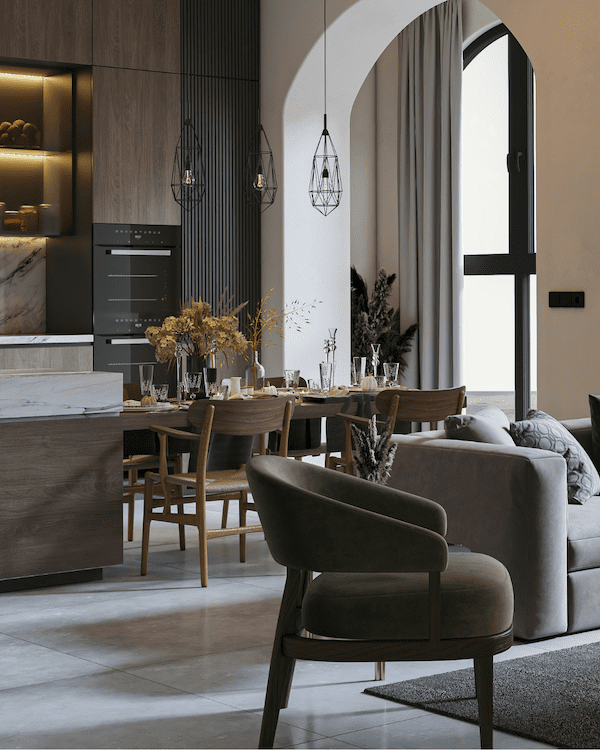Whenever I begin a new project, my clients are always surprised by what I don’t do first.
I don’t rush to pick paint colours.
I don’t shop for furniture.
And I definitely don’t start with accessories.
Instead, I begin with the one thing that makes everything else fall into place…the part most homeowners never even think about. And once you know what it is, you’ll see your home with completely new eyes.
Here’s the thing. Most people start with the fun stuff…the pillows, the paint swatches, the Saturday afternoon furniture shopping. And I get it. Those are the visible changes, the ones that feel like progress.
But if you skip the step designers always do first, no amount of shopping will make your room feel finished. That’s why you can spend thousands of dollars and still walk into your space thinking, “Something’s missing.”
I feel that sometimes decorating can start to feel like déjà vu. You shop, you bring something home, you put it in place… and the room still feels off. So you go back out, buy another piece, swap out a few pillows, maybe even a new rug. Yet somehow, nothing really fixes it.
I actually have a name for it. I call this the Endless Decorating Loop.
It’s not that you don’t have good taste. It’s not that you’re not trying hard enough. The problem is that you’re starting in the wrong place. Most homeowners jump straight into buying and arranging, hoping the next thing will be “the fix.” But without a clear plan, without the first step designers always start with, you’re essentially decorating on guesswork.
And here’s the kicker: the more you try to “fix” it with random purchases, the more money you spend and the more disconnected the room feels. It’s exhausting.
The good news? Breaking the loop is simpler than you think. It starts with doing what designers do first.
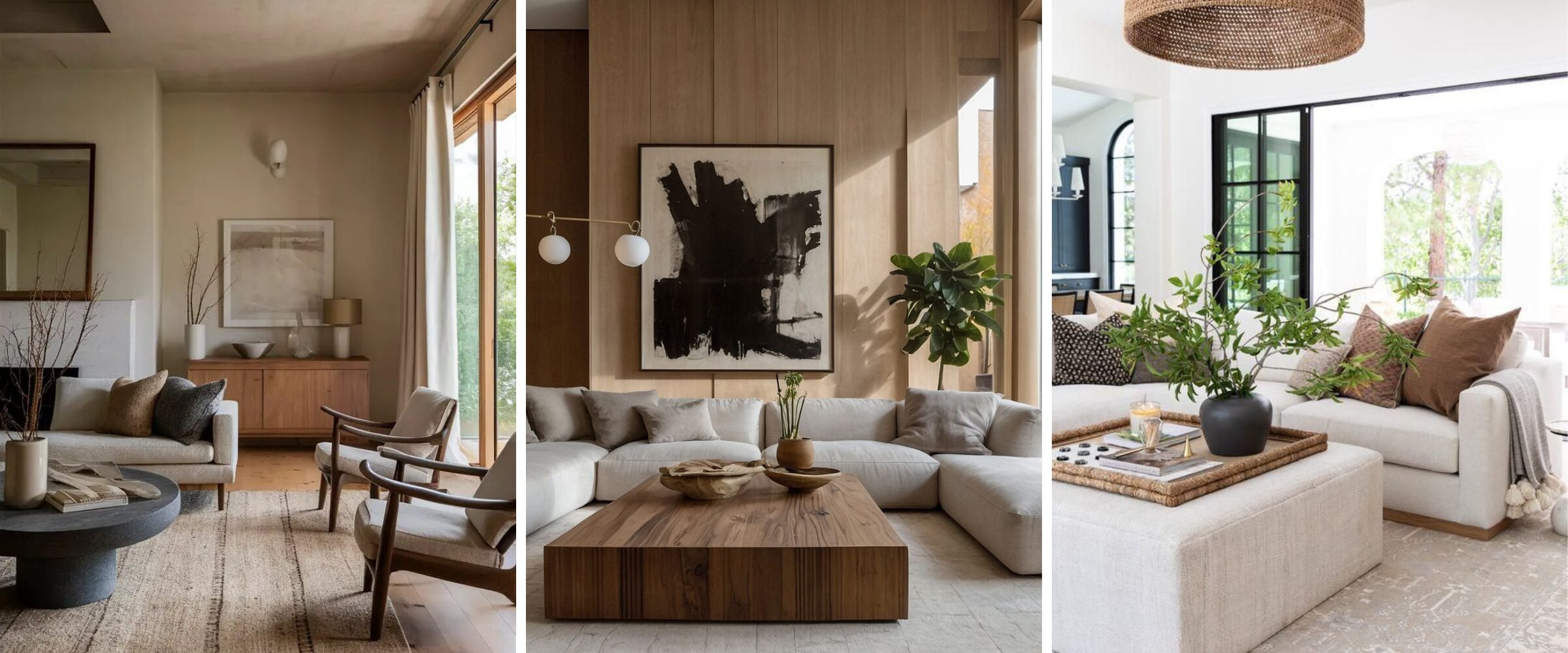
Images via Pinterest.
What Designers Do First (The Secret Step)
So what’s the step that breaks the loop? Designers always begin by zooming out to the big picture. Before a single paint swatch comes out, before a sofa is even considered, we start with the truly important parts like the function, flow, and vision.
- Function: How will the room be used? Is it for entertaining, everyday family life, working from home, or a mix of all three? The answer shapes every design decision.
- Flow: How do people move through this space? Where are the natural pathways? Does the layout feel balanced or cramped? This is about scale, proportion, and circulation–the things most homeowners never map out (or even think about!).
- Vision: What do you want the space to feel like? Relaxed and cozy? Sleek and modern? Airy and calm? This isn’t about picking furniture yet. It’s about setting the mood and direction that keeps all your choices aligned.
Think of it like building a house. You wouldn’t pick out the front door before you had a floor plan. The same principle applies to decorating a single room. If you don’t establish the foundation first, everything else you add will feel a little “off.”
When you start with function, flow, and vision, every choice that follows. From the sofa you select to the artwork you hang, it becomes easier, faster, and more cohesive. It’s the difference between constantly patching holes and creating a design that feels intentional from the start.
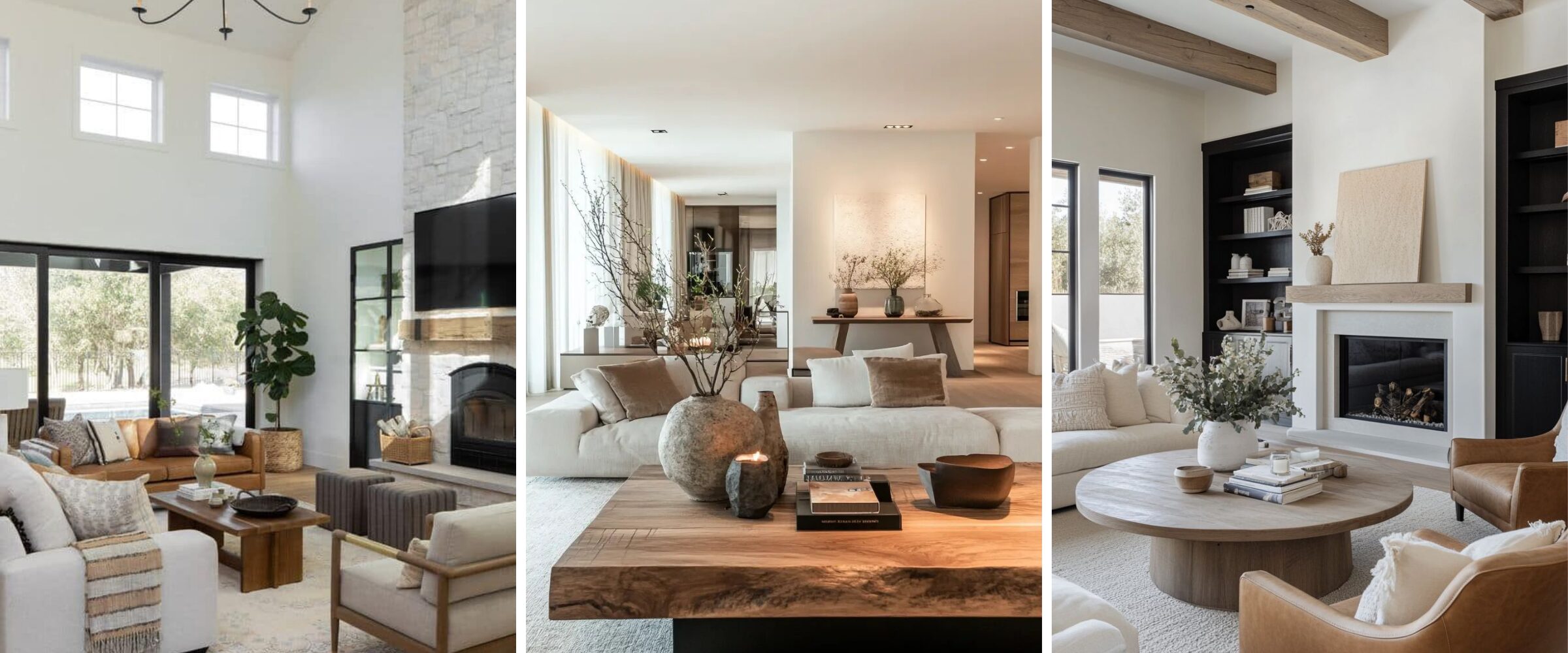
Images via Pinterest.
Why Skipping This Step Costs You
When homeowners skip straight to shopping without thinking about function, flow, and vision, the fallout shows up in three ways:
- Wasted Money
That sofa you loved in the showroom suddenly looks massive in your living room. The rug you scored on sale feels too small once it’s down. Without a plan, you end up buying and re-buying pieces that never quite work. - Wasted Time
Every shopping trip turns into a guessing game. You bring home pieces only to return them, or worse, keep them even though they don’t feel right. The process drags on for months (or years) without ever reaching that polished, finished look you imagined. - Frustration & Decision Fatigue
The more you try to fix the room with random purchases, the more overwhelming it becomes. Each new decision feels heavier because nothing seems to solve the underlying problem. Eventually, you either give up or settle for “good enough.”
I’ve seen this happen with clients who come to me after spending thousands of dollars and endless weekends decorating, yet they still say, “Our home doesn’t feel finished.” The truth is, no accessory or sale item can fix a room that was built on shaky foundations.
But when you start the way designers do, everything shifts. Suddenly the guesswork is gone, the endless returns stop, and you’re no longer asking, “What’s missing?”, because your space finally feels right.
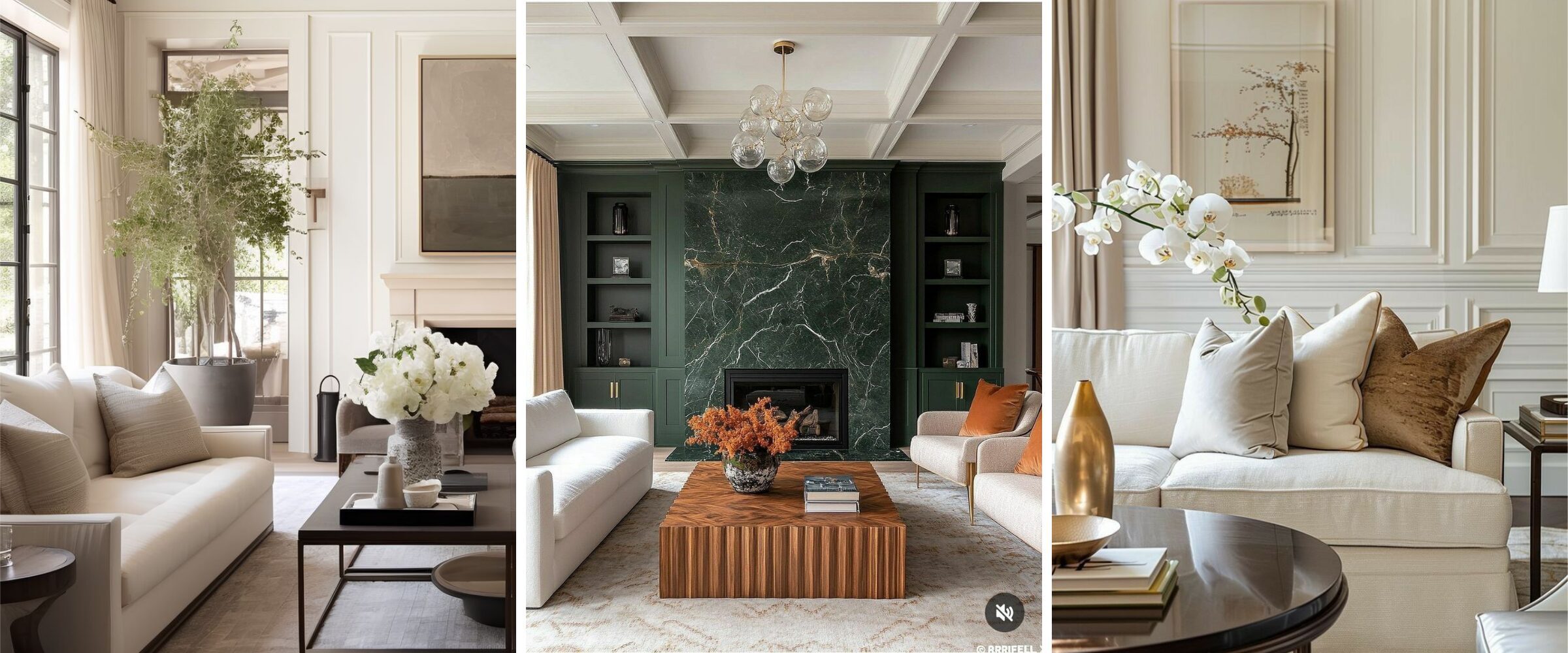
Images via Pinterest.
How to Steal This Designer Habit for Yourself
The good news? You don’t need to be a professional designer to borrow this habit. With a little bit of upfront thinking, you can set yourself up for a room that feels cohesive and intentional instead of patched together. Here’s where to start:
- Define the Function
Ask yourself: What do I really need this room to do for me?
Is it about entertaining guests? A cozy family movie night? A space to work from home? Get clear on your top priorities, because function drives every design decision. - Map the Flow
Before moving a single piece of furniture, sketch out your room on paper (or tape out shapes on the floor). Notice the natural traffic paths. Where do people enter? How do they move through? A simple layout plan can save you from buying pieces that never fit. - Clarify Your Vision
Instead of scrolling endlessly, gather a handful of inspiration photos that capture the feeling you want not just the look. Maybe it’s warm and welcoming, calm and minimalist, or fresh and modern. A clear vision keeps you from getting distracted by shiny objects that don’t belong. - Use a Mood Board
Even a simple one in Canva or PowerPoint can help you see if your ideas hang together. When you put images of furniture, colours, and textures side by side, you’ll quickly spot what feels “off.”
I’m following these exact same steps right now as I redesign my mom’s condo. At the moment, I’m knee-deep in planning her kitchen renovation and I haven’t picked tiles, appliances, or cabinet finishes yet. As tempting as it is to jump straight to those decisions, I know the first priority is figuring out which walls should be opened up to improve the flow, and how I can maximize storage in a small condo kitchen. Once those big-picture decisions are set, the fun details like finishes and fixtures will fall naturally into place.
These steps may not be as instantly gratifying as grabbing throw pillows on a Saturday afternoon, but they’re the difference between a room that constantly nags at you and one that feels effortlessly pulled together.
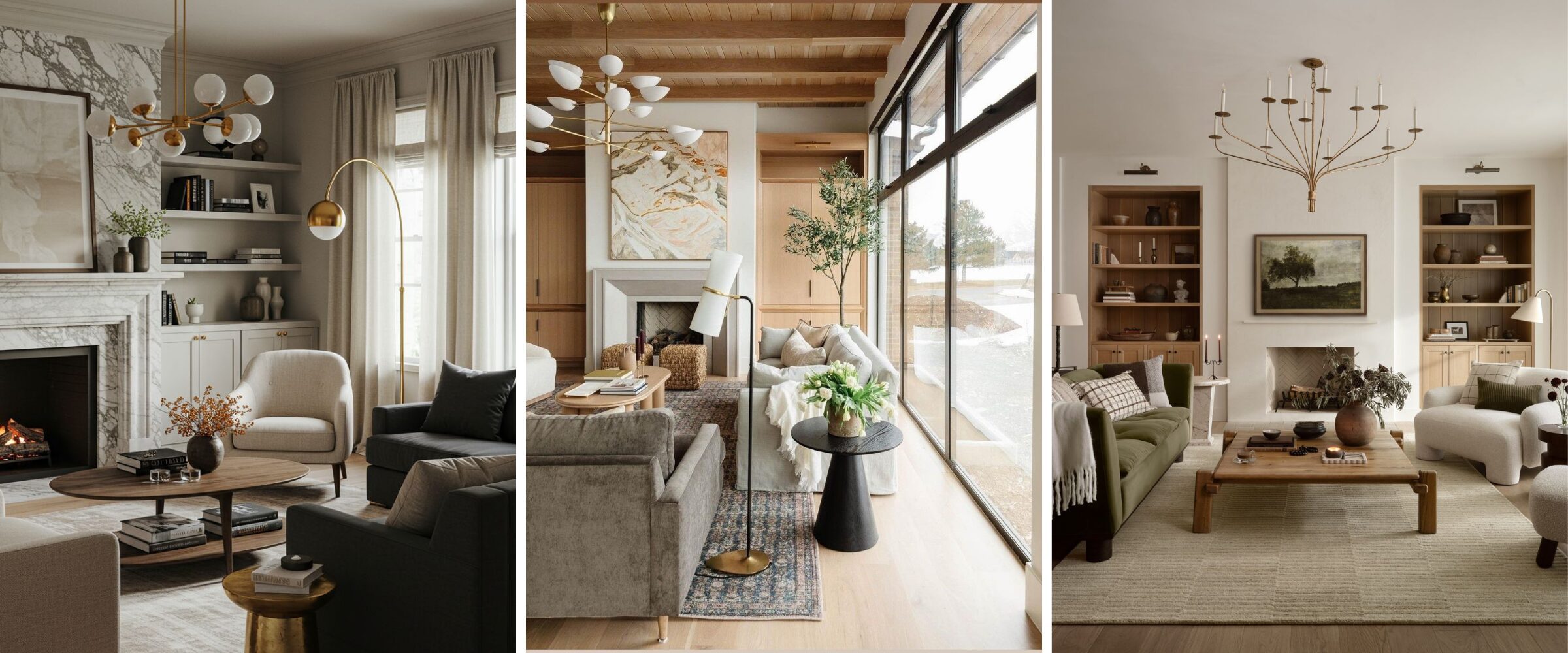
Images via Pinterest.
The Takeaway
If your space doesn’t feel quite right, it’s not because you lack style or can’t make good choices. It’s because you likely skipped the step every designer starts with.
When you begin with function, flow, and vision, everything else becomes easier. You stop second-guessing every purchase. You stop wasting weekends returning items that don’t work. And you finally get that sense of ease when you walk into your home and think, “Yes, this feels like me.”
The truth is, decorating isn’t about doing more. It’s about doing things in the right order.
And if you’re ready for a professional eye on your space, that’s exactly why I created Room Rx. Think of it as a design “prescription.” I’ll diagnose what’s off in your room and give you a clear, actionable plan to fix it. It’s the easiest way to break the Endless Decorating Loop and start your project the way a designer would.

